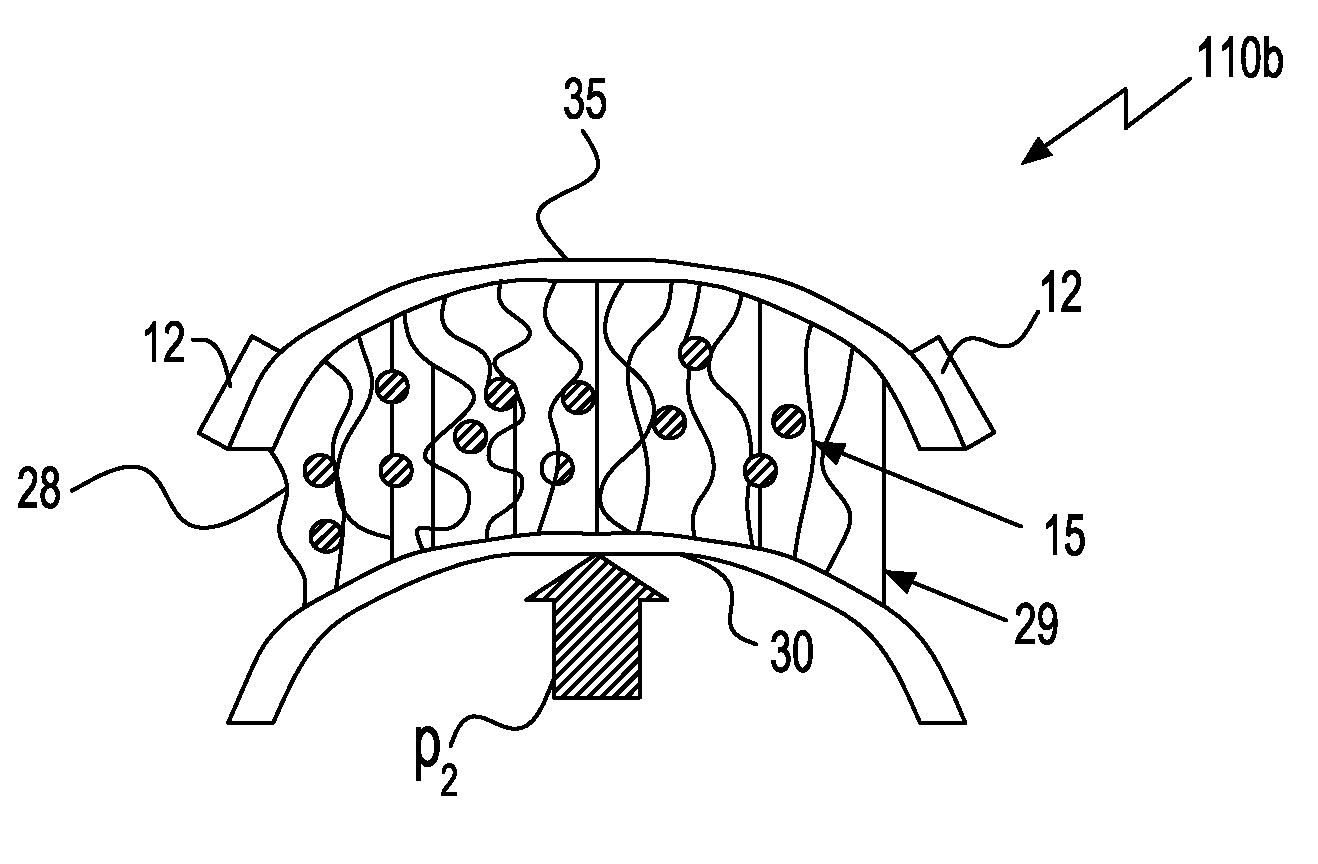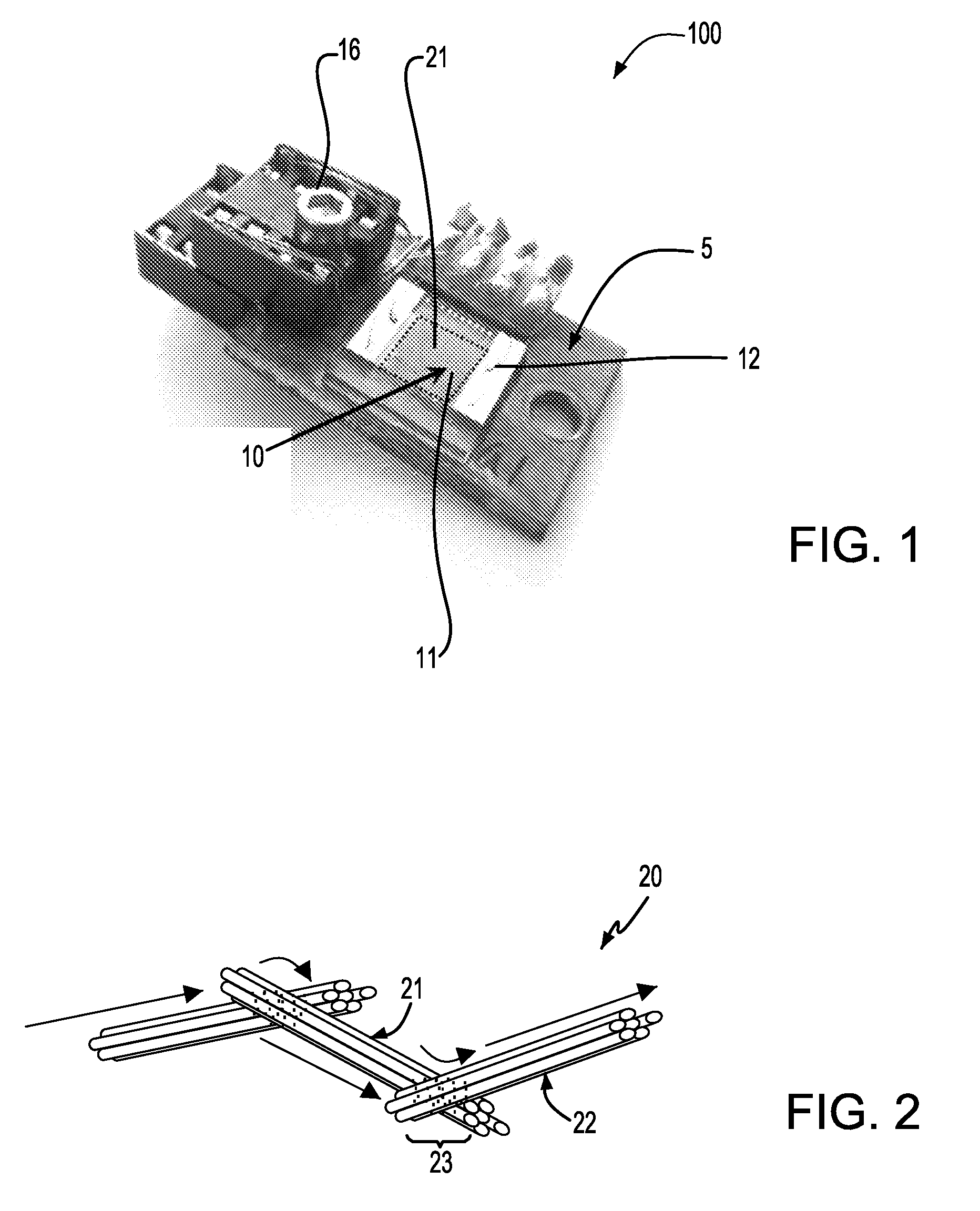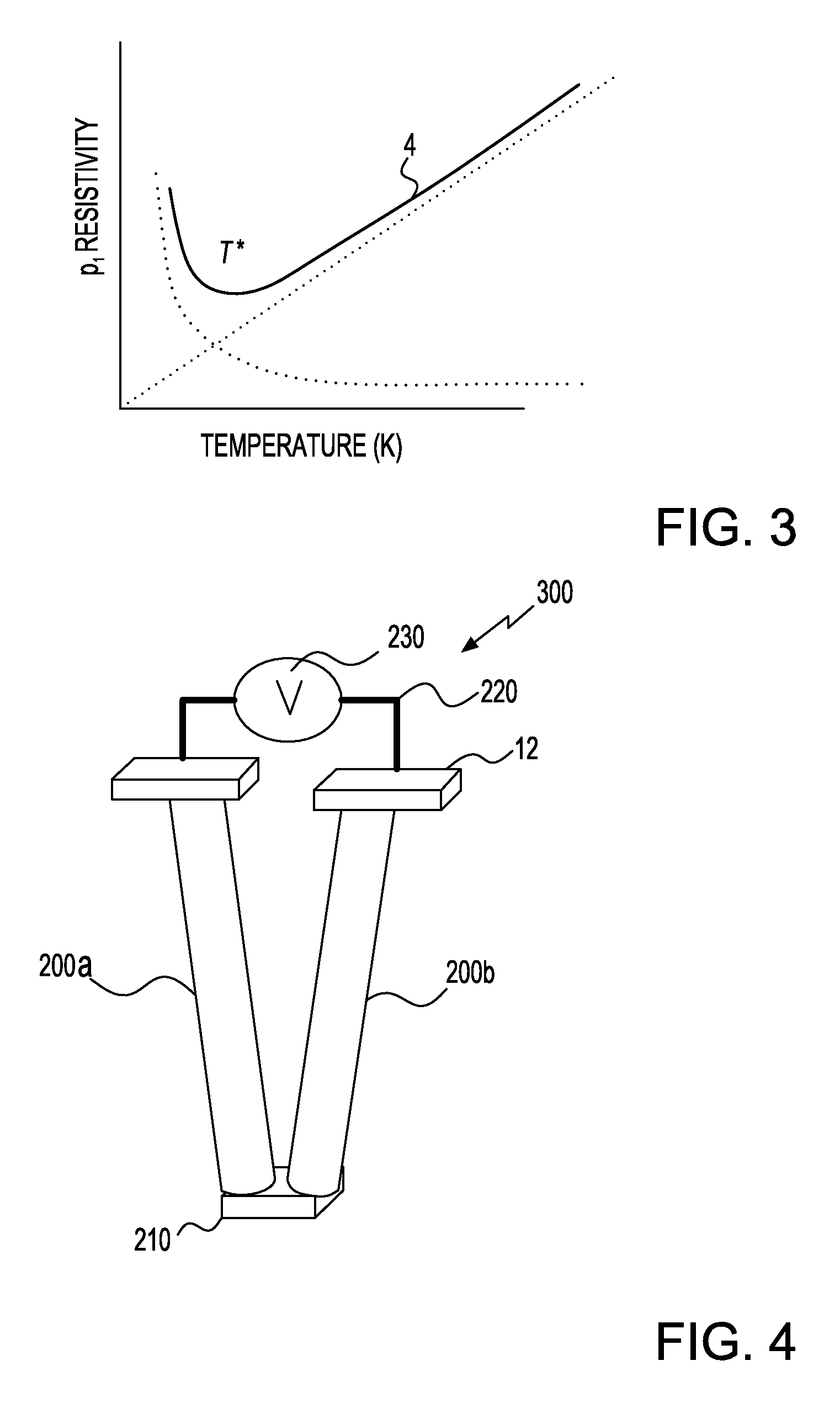Carbon nanotube temperature and pressure sensors
a carbon nanotube and temperature and pressure sensor technology, applied in the field of sensors, can solve the problems of difficult to determine whether a temperature, pressure or both change has occurred, and it is difficult to determine what external environment has been applied to the sensor
- Summary
- Abstract
- Description
- Claims
- Application Information
AI Technical Summary
Benefits of technology
Problems solved by technology
Method used
Image
Examples
example 1
Linear Temperature Dependent Resistivity
[0112]Single wall carbon nanotubes were synthesized by laser vaporization and purified by dilute HNO3 reflux / air oxidation procedure. A conjugated polymer poly(2-methoxy-5-(2′-ethylhexyloxy)-1,4-phenylenevinylene) (MEHPPV) was provided having a molecular weight of 51,000 and a polydispersity of 1.1 for the matrix in which the single wall nanotubes were fixed to provide a pad of electrically interconnected carbon nanotubes. The polymer matrix and the single wall carbon nanotubes were mixed to formulate a composite material that was spin cast onto a polymeric substrate to provide the sensor element 10 of a temperature sensor 100, as depicted in FIG. 1.
[0113]A 0.1 mA drive current was then applied to the sensor element including the electrically interconnected carbon nanotubes, while the sensor element was subjected to temperatures ranging from about 20° K to about 350° K. The resistance of the electrically interconnected carbon nanotubes was mea...
example 2
Linear Temperature Dependent Resistivity Independent of Pressure
[0117]FIGS. 10A and 10B are plots depicting the effect of static pressure on the temperature sensing abilities of the temperature sensor that provided the data illustrated in FIG. 9A. FIG. 10A depicts there is substantially no change in the linear response of the electrical properties of the sensing element to changes in temperature by the application of pressure to temperature sensor elements composed of single wall carbon nanotubes in which the number of junctions between each of the electrically interconnected nanostructures is fixed.
[0118]The temperature sensors were exposed to temperatures ranging from 20° C. to 50° C., and static pressures ranging from 10 g / cm2 to 4,000 g / cm2. The static pressure was provided by applying a load ranging from 18 g to approximately 8,445 g to an area of the sensor element on the order approximately 2.05 cm2. While under the applied load, the temperature sensor was subjected to increa...
example 3
[0121]FIGS. 11A and 11B are plots of a change in voltage (delta voltage (V)) that is measured from the sensor element of a pressure sensor as a function of time, which illustrates the pressure sensing performance of a pressure sensor composed of vertically aligned carbon nanotube.
[0122]FIGS. 12A-12C illustrate the pressure sensor 110e that was used to generate the plots included in FIGS. 11A and 11B. The pressure sensor 110e includes a bundle of vertically aligned carbon nanotubes 15 that is in electrical communication with metal electrodes 12 at opposing ends of the bundle of vertically aligned carbon nanotubes 15. The electrodes 12 and connections thereto were arranged in a two point four wire configuration. FIGS. 12A-12C illustrate a progression in the pressure being applied to the pressure sensor 110e. FIG. 12A illustrates the bundle of vertically aligned carbon nanotubes 15 prior to the application of pressure. FIG. 12B illustrates the bundle of vertically align...
PUM
 Login to View More
Login to View More Abstract
Description
Claims
Application Information
 Login to View More
Login to View More - R&D
- Intellectual Property
- Life Sciences
- Materials
- Tech Scout
- Unparalleled Data Quality
- Higher Quality Content
- 60% Fewer Hallucinations
Browse by: Latest US Patents, China's latest patents, Technical Efficacy Thesaurus, Application Domain, Technology Topic, Popular Technical Reports.
© 2025 PatSnap. All rights reserved.Legal|Privacy policy|Modern Slavery Act Transparency Statement|Sitemap|About US| Contact US: help@patsnap.com



